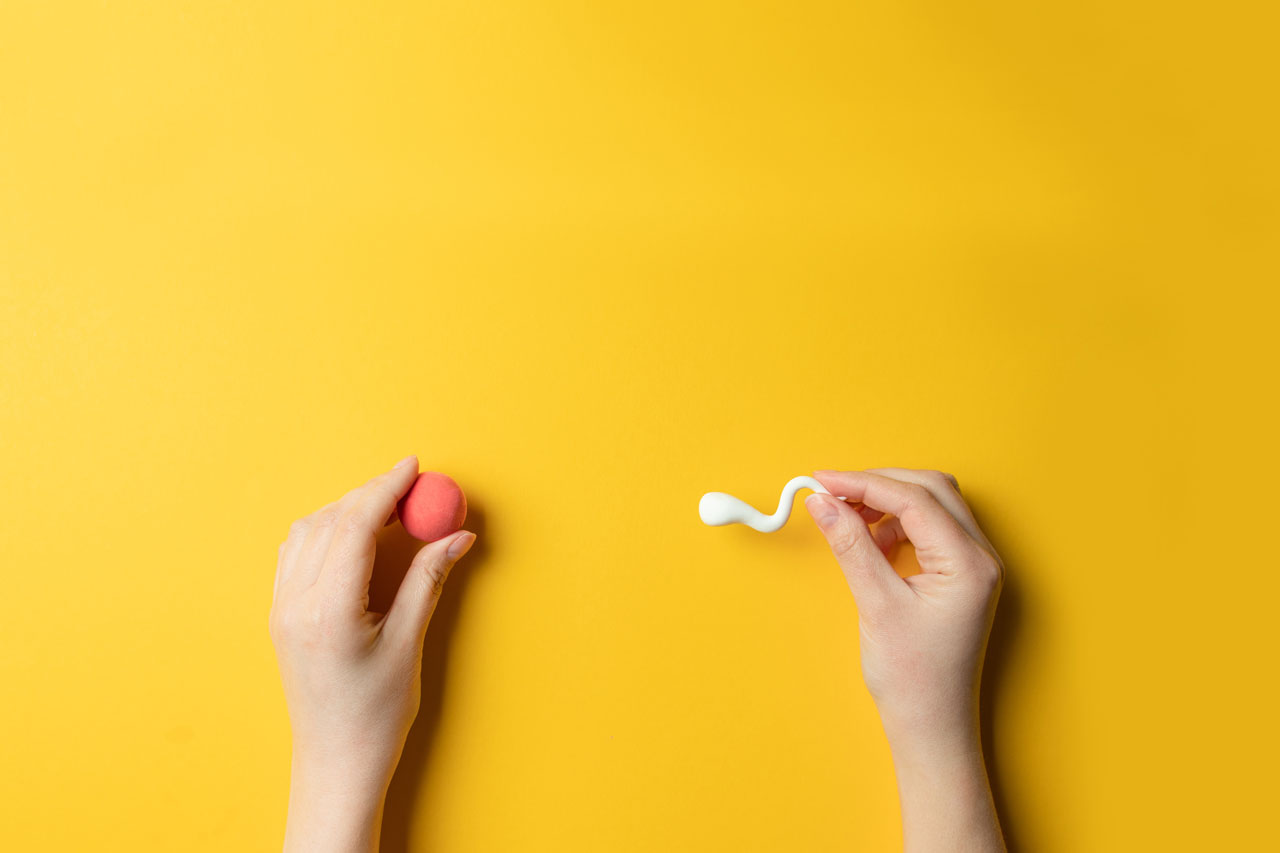What is ICI?
ICI involves placing a semen sample close to the cervical canal. The method follows the sperm’s natural path and requires minimal equipment. By contrast, intrauterine insemination (IUI) introduces a processed sample directly into the uterine cavity; with in vitro fertilisation (IVF) and ICSI, fertilisation occurs in the laboratory.
Evidence and success rates
Overviews show IUI often outperforms ICI in many scenarios, particularly with prepared samples and precise timing. In practice, ICI pregnancy chances per cycle are commonly quoted around 5–15 %. Actual likelihood depends mainly on age, underlying cause, semen quality and exact timing. For context, see the systematic review comparing ICI vs IUI with donor sperm from Cochrane and laboratory standards for semen examination in the WHO manual (6th edition).
Materials and preparation
- Sterile collection cup, needle-free single-use syringe, clean surface; single-use gloves as needed.
- Allow natural liquefaction of the sample; avoid excessive heat or cold.
- Use sperm-friendly products; avoid additives that reduce motility or viability.
- Documentation: date, time, cycle day, donor/batch details, handling steps and any observations.
- Clarify in advance: infection screening, consents, transport routes and local requirements.
Practical steps
Logistics may vary, but core principles are consistent:
- Obtain the sample or thaw per sperm bank instructions and perform a quick visual check.
- Slowly place the sample near the external cervical os without pressure or risk of injury.
- Remain still for a few minutes after application; avoid sudden movements.
- Dispose of single-use items safely; do not reuse disposables.
Guidance on safe procurement and home use of donor sperm is provided by the UK regulator: HFEA.
Timing and cycle
Timing is critical. ICI should be performed as close to ovulation as possible. Many choose one attempt on the day of a positive LH test and, if needed, a second the following day. Cycle tracking via LH tests, cervical mucus and basal body temperature can help; the most accurate option is clinician-led ultrasound monitoring. With irregular cycles, several well-planned attempts are reasonable.
Comparison: ICI · IUI · IVF · ICSI
| Criterion | ICI | IUI | IVF | ICSI |
|---|---|---|---|---|
| Setting | Low barrier; placement near cervix | Clinical; processed sample in uterus | Clinic + lab; fertilisation in lab | Clinic + lab; microinjection per oocyte |
| Sample | Unprocessed or processed | Washed and selected sperm | Prepared sperm; co-incubation with oocytes | Single sperm injected into oocyte |
| Per-cycle success | Often lower; highly timing-dependent | Moderate; higher with stimulation | Higher than IUI; age-dependent | Similar to IVF; advantage with male factor |
| Complexity | Low | Low–moderate | Moderate–high | High (micromanipulation) |
| Key risks | Limited; hygiene/testing are central | Multiple pregnancy with stimulation | OHSS, procedural risks, multiples | As with IVF + potential cellular damage |
| Typical use | Entry option without major factors | Unexplained infertility, mild male factor, donor sperm | Tubal factors, endometriosis, failed IUI | Marked male factor, prior fertilisation failure |
Method choice depends on age, findings, semen quality, schedule and personal tolerance. Guidelines generally support individualised assessment and a stepwise approach.
Safety and infection prevention
Up-to-date testing for transmissible infections should be in place before ICI. Sperm banks follow defined screening and quarantine requirements. In privately arranged situations, informed consents, traceable documentation, clear responsibilities and secure logistics are essential. Use sperm-friendly products, avoid temperature stress and never reuse single-use items.
Seek medical assessment for pain, fever, unusual discharge or bleeding. The WHO semen examination manual provides laboratory standards.
Sperm sources and handling
Options include a partner sample, a known donor or sperm banks offering fresh or cryopreserved samples. Each option carries medical, organisational and legal considerations. Bank-mediated donation follows defined standards for quality, safety and traceability. For private arrangements, education, testing, consents, documentation and clear communication channels are crucial.
When to seek medical care
Assessment and counselling are sensible if pregnancy does not occur after several well-timed cycles; with irregular cycles; suspected endometriosis or tubal factors; markedly impaired semen analysis; recurrent pregnancy loss; or symptoms such as pain, fever or bleeding. Age, findings and semen quality help determine whether ICI, IUI, IVF or ICSI is most appropriate.
RattleStork – planning and community around ICI
RattleStork supports people who want to plan family building responsibly. The platform offers verified profiles, secure conversations and helpful personal tools such as appointment notes, cycle and timing entries, and private checklists. RattleStork does not provide medical services and does not replace medical advice, but it helps consolidate information and connect with suitable contacts.

Conclusion
ICI is a practical entry point in assisted reproduction. Success depends chiefly on age, underlying cause, sample quality and precise timing. Safety comes from clean materials, clear agreements, reliable testing and complete documentation. If considering ICI, weigh IUI, IVF and ICSI objectively and involve medical diagnostics as needed to make an informed decision.

